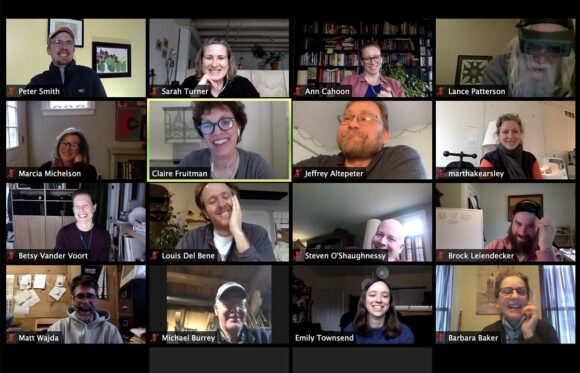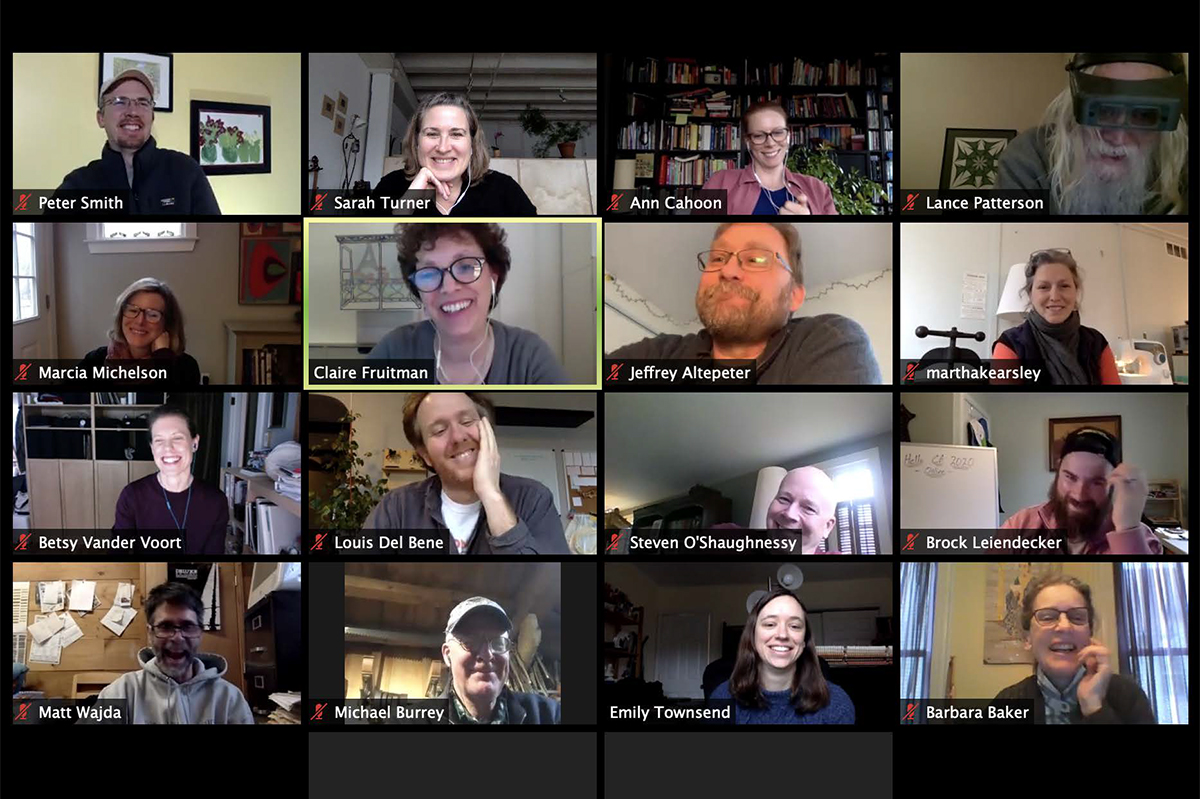Hands-On Training to Remote Learning


When NBSS closed its building in mid-March 2020, it not only disrupted schedules and in-progress work, but also upended its educational model. With all students and faculty safely at home, our community dove into untested waters: remote learning. For all of the inherent challenges, the commitment, creativity, and flexibility of all those involved was wondrous to behold.
At first glance, it may seem as though what we teach can’t be translated to the virtual world. The hand-based Sloyd system of manual arts training is the core of our educational philosophy, after all. But while you have to use your hands, Sloyd is not location dependent; the framework of progressing through lessons of increasing complexity can be applied to any project, anywhere.
Unable to meet in person for what would become the rest of the semester, instructors explored a wide range of methods to teach their students. Many maintained hand skills with projects that could be done from the kitchen table, some grew student’s knowledge of business and marketing, and several took on research projects they wouldn’t normally have time to cover.
But one needs the proper tools to work effectively. Understanding that some students wouldn’t have the technical infrastructure or know-how to stay connected, the School provided computers to those in need, made sure internet connectivity was present/sound, and offered tutorials for those with a software learning curve.
For all of their similarities in approach, the specific tasks varied widely by program:
- Cabinet & Furniture Making and Bookbinding programs partnered with publishers Lost Art Press, Guild of Bookworkers, and Fine Woodworking to dig into research-based projects. These companies generously shared their content with our students.
- Jewelry Making & Repair students worked remotely in groups, keeping them up to speed on the technical complexities of small-scale joinery and attachments.
- Preservation Carpentry students surveyed and drafted assessments of historic buildings in their neighborhoods.
- Piano Technology and Locksmithing & Security Technology students were given hypothetical clients and tasked with quoting out the job—important practice for the real world.
- Carpentry students utilized Google classroom to teach the principles of roof & timber framing.
- Violin Making & Repair students got a jump on research papers needed for graduation, and due to the nature of their work, many were still able to progress on their projects.
- Continuing Education instructors created a series of fun how-to videos for kids that could be done remotely using materials and tools found around the home.
Though we acknowledge there’s no substitution for in-person instruction, the creativity, passion, and willingness to stay the course has been truly inspiring, and is a testament to the strength and character of our community. The move into online instruction is no small feat, and our community flexed like never before in response. We know that the lessons learned now will continue to serve both the School, and our students, well for years to come.